In the ever-evolving world of kitchen appliances, the contact grill has emerged as a versatile and sought-after cooking tool. With its ability to offer a unique grilling experience, these appliances have captured the interest of home chefs and culinary enthusiasts alike. As the demand for personalized kitchen gadgets grows, custom contact grills have become a hot topic in the market. This piece delves into the reasons behind their popularity, the market trends fueling customization, and the impact of consumer preferences on this niche sector. We’ll also explore the latest design and technology innovations, showcase successful brands, and discuss the challenges and opportunities that lie ahead. Join us as we take a closer look at the future of custom contact grills in the kitchen landscape.
Introduction to Contact Grills: A Brief Overview
Contact grills have emerged as a staple in modern kitchens, offering a unique cooking experience that combines the convenience of an electric grill with the versatility of a pan. These compact appliances are designed to press food between two heating plates, creating a seared, flavorful outcome with minimal mess. In this overview, we’ll delve into the basics of contact grills, their functionality, and why they’ve become a popular choice for home cooks and chefs alike.
The concept of contact grilling is simple yet effective. These grills are typically made from non-stick materials to ensure easy release of food and to minimize the need for oil. The plates are usually flat, though some models come with textured surfaces for added grill marks and a more authentic cooking experience. The design allows for even heat distribution, which is crucial for achieving that perfect char on steaks, burgers, or even delicate fish fillets.
One of the standout features of contact grills is their versatility. They can be used to cook a wide range of foods, from meats to vegetables, and even sandwiches. This makes them a fantastic addition to any kitchen, especially for those who love outdoor grilling but are limited by space or weather conditions. The compact size also means they can easily be stored away when not in use.
In terms of operation, contact grills are straightforward. You simply plug them in, preheat them to the desired temperature, and place your food between the plates. The cooking time is typically shorter than traditional grilling methods, and the plates’ design helps to seal in the juices, resulting in tender and juicy dishes.
The convenience of contact grills is hard to ignore. They are easy to clean, as the non-stick surfaces reduce the likelihood of food sticking and the flat design makes for simple wiping or rinsing. Additionally, contact grills often come with safety features like cool-touch handles and automatic shut-off functions, providing peace of mind while cooking.
Over the years, contact grills have seen various innovations. Some models now come with adjustable temperature controls, allowing users to tailor the cooking process to their specific needs. Others feature additional cooking surfaces, such as side burners or warming plates, for a more comprehensive cooking experience. These advancements have only served to enhance the appeal of contact grills, making them even more attractive to consumers.
While contact grills are popular worldwide, their rise has been particularly pronounced in the European and American markets. This is due in part to the growing trend of home cooking and the desire for healthier eating habits. Contact grills offer a healthier alternative to frying, as they require little to no oil and can cook food to perfection without the added calories.
In Europe, the demand for high-quality appliances has always been strong, and contact grills have capitalized on this by offering premium designs and materials. The German and Italian markets, in particular, have seen a surge in the sales of custom contact grills, with consumers seeking out unique features and stylish aesthetics.
Similarly, in the United States, the trend towards custom and personalized kitchen gadgets has been on the rise. Consumers are not just looking for appliances that function well but also those that reflect their personal style. Custom contact grills allow users to choose from a variety of colors, designs, and even integrated cooking technologies, such as infrared heating.
As we look at the current landscape of contact grills, it’s clear that the market is evolving. Brands are continuously seeking to differentiate themselves by offering innovative features and superior build quality. This has led to a competitive market where customers have more choices than ever before.
However, it’s not just about innovation; it’s also about understanding consumer preferences. For instance, many consumers are looking for contact grills that are not only visually appealing but also environmentally friendly. Brands that can offer energy-efficient models or those made from sustainable materials are likely to attract a broader customer base.
In conclusion, contact grills have come a long way since their inception. They’ve evolved from simple cooking appliances to versatile, stylish tools that can enhance any kitchen. With the continued demand for custom and innovative products, it’s likely that contact grills will continue to play a significant role in the culinary landscape for years to come.
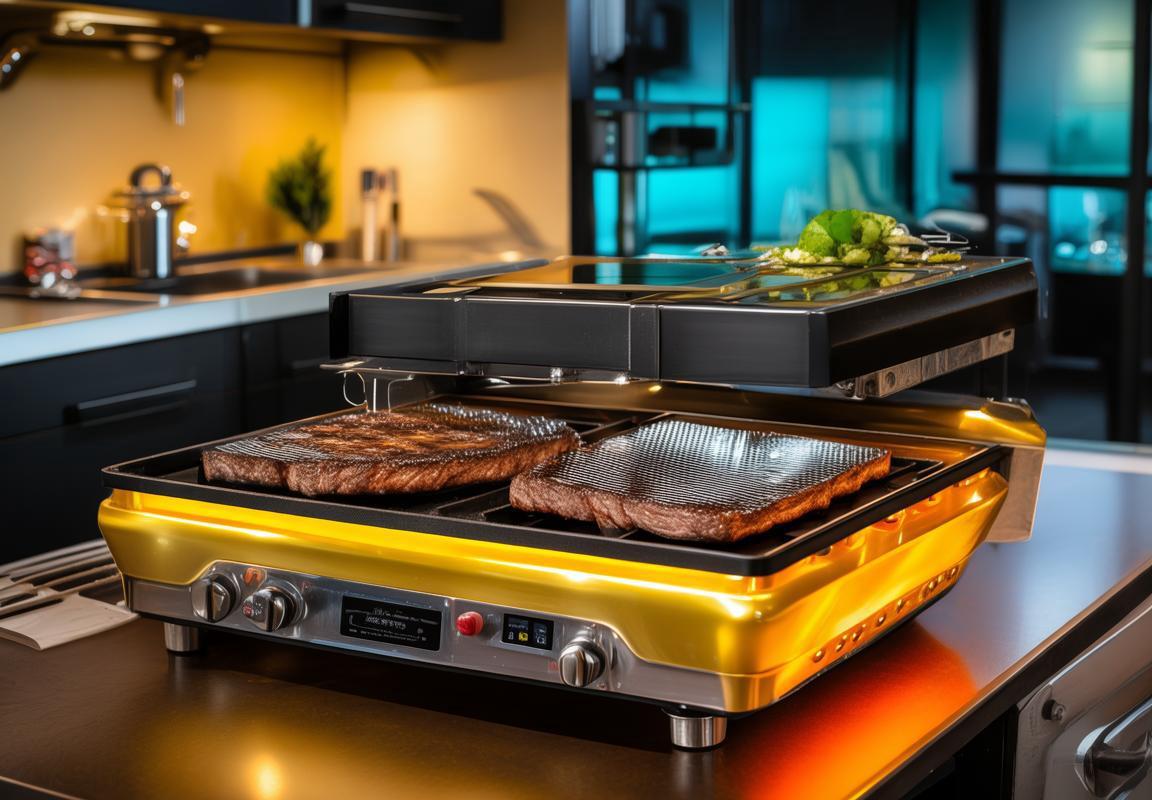
The Rise of Contact Grills in the欧美 Market
The contact grill, a versatile and innovative cooking appliance, has seen a remarkable surge in popularity across the market. Once a niche product, it has now become a staple in many modern kitchens, offering a unique blend of convenience and culinary flair. Here’s a closer look at how contact grills have made their mark.
Gone are the days when outdoor grilling was the only way to enjoy the flavors of charred meats. The advent of contact grills brought the joy of searing and grilling indoors, year-round. This shift has been particularly embraced in regions like North America and Europe, where the climate can limit the time spent outdoors.
As the demand for convenience cooking solutions grew, contact grills stepped in to fill the gap. Their compact design and ease of use have made them a favorite among busy professionals, families, and anyone looking to simplify their cooking routine. The ability to achieve those perfect grill marks and the tenderness of grilled food without the need for a traditional grill has been a game-changer.
The convenience factor isn’t the only reason for the rise of contact grills. These appliances have also been lauded for their health benefits. With contact grilling, there’s less oil needed compared to traditional frying methods, which can lead to lower calorie and healthier meals. This health-conscious approach has resonated with consumers who are increasingly seeking ways to incorporate nutritious eating habits into their daily lives.
Another contributing factor to the popularity of contact grills is the variety of cooking options they offer. Beyond the classic searing, these grills can also be used for pan-frying, sautéing, and even toasting bread or sandwiches. This versatility has made them a one-stop appliance for a wide range of recipes, from breakfast to dinner.
As technology has advanced, so too has the design of contact grills. Modern models often come with features like adjustable heat settings, non-stick surfaces, and even integrated temperature controls. These advancements have not only improved the cooking experience but have also made contact grills more user-friendly and adaptable to different types of food and cooking techniques.
The rise of contact grills has also been fueled by the influence of food culture. The popularity of gourmet and international cuisines has sparked a desire among consumers to recreate these flavors at home. Contact grills have become a tool for culinary exploration, allowing home chefs to experiment with different spices, marinades, and cooking styles with ease.
Brands have also played a significant role in the growth of the contact grill market. With a wide array of brands offering their own versions of the appliance, consumers have been spoilt for choice. From high-end brands with advanced features to budget-friendly options, there’s a contact grill out there for every budget and need.
The integration of contact grills into kitchen aesthetics has also been a factor in their popularity. Modern kitchens are designed with sleek and minimalistic designs, and contact grills fit right into this aesthetic. Their clean lines and compact size make them a stylish addition to any kitchen counter.
The environmental consciousness of today’s consumers has also played a part in the success of contact grills. With a smaller carbon footprint compared to traditional outdoor grilling, these appliances align with the values of sustainability and eco-friendly living.
In conclusion, the rise of contact grills in the market is a testament to the changing landscape of home cooking. As consumers seek convenience, health, and culinary versatility, contact grills have emerged as a favorite choice, offering a unique blend of features that cater to a wide range of needs and preferences.
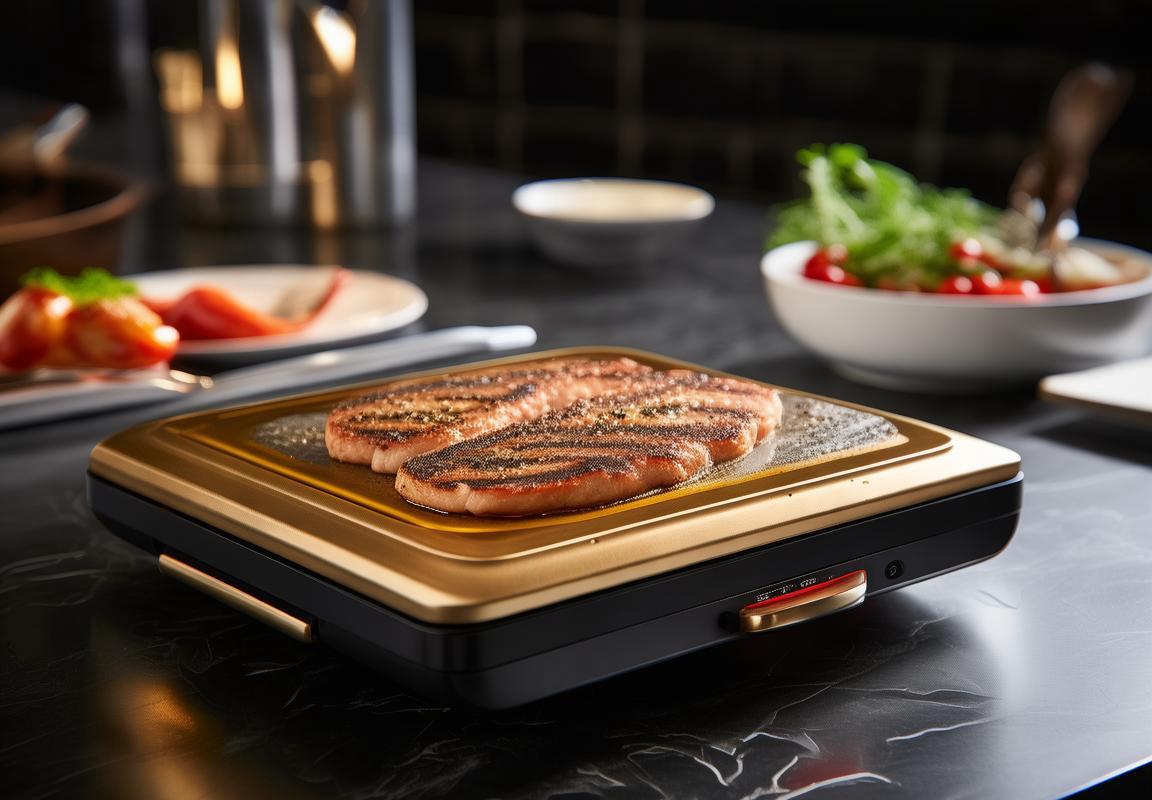
Understanding the Appeal of Custom Contact Grills
The allure of custom contact grills in the market is a blend of personalization, innovation, and culinary sophistication. These grills, once a niche product, have now become a sought-after item for home chefs and culinary enthusiasts alike. Here’s a closer look at what makes custom contact grills so appealing:
Grill enthusiasts have long sought out unique cooking experiences, and custom contact grills offer a canvas for creativity. With the ability to tailor the design, features, and even the cooking surface, these grills allow users to express their individuality in the kitchen. From sleek, modern designs to rustic, vintage aesthetics, the options are virtually limitless.
The convenience factor cannot be overstated. Traditional grills require meticulous preparation and often involve flipping food to ensure even cooking. Custom contact grills, on the other hand, cook food on a flat surface, reducing the need for constant monitoring and turning. This not only saves time but also ensures that the food retains its juices and flavor, resulting in a more tender and succulent final product.
Safety is another key aspect that draws consumers to custom contact grills. With their flat surfaces, these grills eliminate the risk of flare-ups and reduce the likelihood of burns. The even distribution of heat ensures that food is cooked thoroughly without the risk of undercooking or charring. This peace of mind is particularly appealing to families with young children or those who prefer a safer cooking environment.
The versatility of custom contact grills is unmatched. They can be used to cook a wide variety of foods, from sandwiches and burgers to vegetables and seafood. The ability to sear proteins and lock in flavors makes them a favorite among those who enjoy a variety of cooking techniques. Whether you’re a fan of classic grill marks or prefer a smooth, non-stick surface, customization allows you to achieve the perfect cooking experience every time.
For those who are health-conscious, custom contact grills offer a healthier alternative to traditional grilling methods. The flat surface reduces the amount of oil needed, and the even cooking ensures that food doesn’t stick, eliminating the need for butter or cooking sprays. This not only enhances the flavor but also contributes to a healthier lifestyle.
Customization extends beyond the design and cooking surface. Many manufacturers offer a range of accessories and attachments that can be added to enhance the functionality of the grill. From built-in temperature controls to adjustable pressure systems, these add-ons can elevate the cooking experience to new heights. Users can choose the features that best suit their needs, whether it’s for outdoor entertaining or daily meal preparation.
The rise of social media and online communities has also played a significant role in the popularity of custom contact grills. As more people share their cooking adventures and creations online, the demand for unique and personalized kitchen appliances has grown. The ability to showcase a custom grill in social media posts or cooking videos adds an element of fun and personal branding to the cooking experience.
In the realm of sustainability, custom contact grills have an edge. They are often made from high-quality, durable materials that are designed to last for years. This not only reduces the environmental impact of frequent appliance replacements but also provides a long-term investment for the consumer.
Lastly, the emotional connection that consumers feel towards their custom contact grills is undeniable. Owning a personalized kitchen appliance can evoke a sense of pride and accomplishment. It’s a reflection of one’s personality and lifestyle, making the cooking process not just a task but an enjoyable and fulfilling experience.
In summary, the appeal of custom contact grills in the market lies in their combination of personalization, convenience, safety, versatility, health benefits, customization options, social engagement, sustainability, and emotional value. As the demand for unique and high-quality kitchen appliances continues to grow, it’s clear that custom contact grills have found their place in the hearts and kitchens of many culinary enthusiasts.
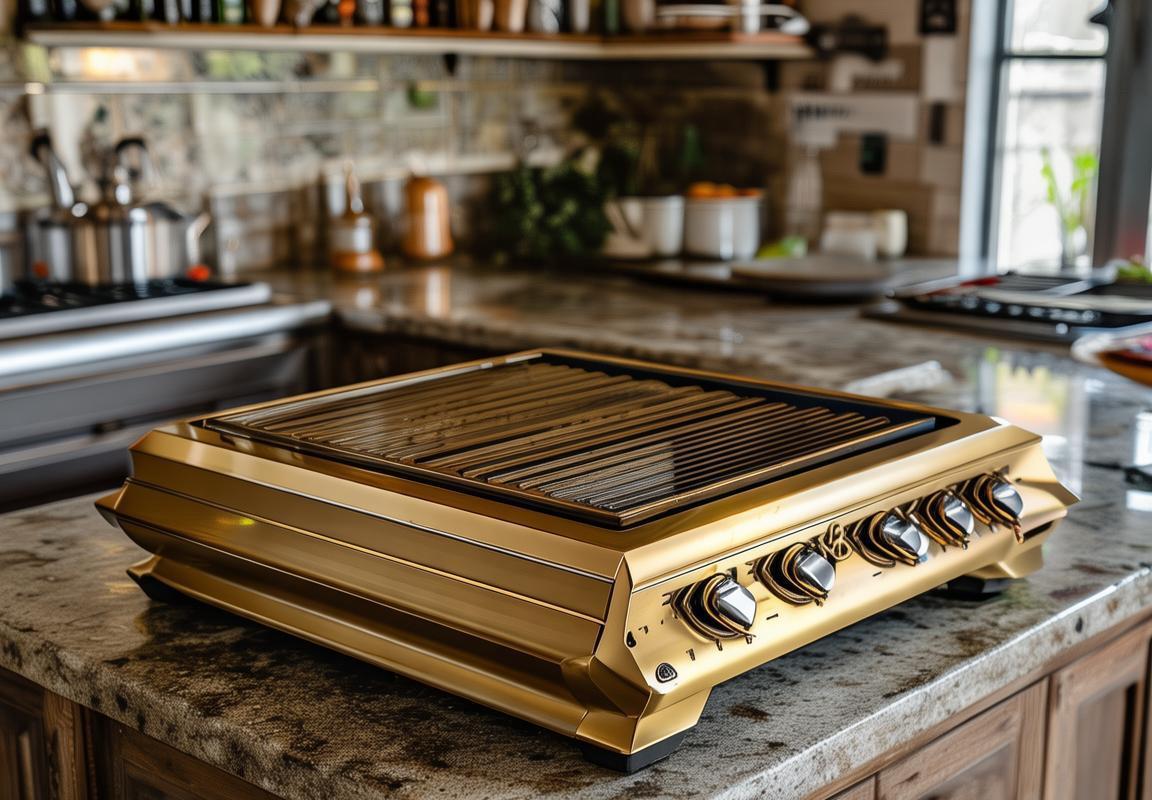
Market Trends: Key Factors Driving Customization
The surge in popularity of custom contact grills in the market can be attributed to several key factors that have fueled the trend of personalization. Here’s a breakdown of some of these influential elements:
The demand for unique culinary experiences has been on the rise, with consumers seeking out specialized cooking tools that offer a personalized touch to their meals. This quest for individuality has propelled the market for custom contact grills, as they allow users to not only cook their favorite foods but also to express their personal style through the design of their grill.
Technological advancements have made it easier and more cost-effective to customize products. From online configurators to 3D printing, the production process for custom contact grills has evolved, reducing barriers to entry for both manufacturers and consumers. This accessibility has opened up a world of possibilities for customers to create grills that are as unique as they are.
The concept of “foodie culture” has gained traction in recent years, with a growing number of people taking pride in their cooking skills and the quality of the food they prepare. Custom contact grills cater to this niche by offering a high degree of control over the cooking process, allowing enthusiasts to experiment with different recipes and achieve precise results.
Brands have recognized the value of customization in the marketplace. By offering personalized options, they are not only satisfying customer desires for uniqueness but also fostering brand loyalty. Consumers who feel a connection to a product or brand are more likely to become repeat buyers and advocates for the product.
The rise of social media platforms has played a significant role in promoting customization trends. With the ability to share images and videos of custom contact grills online, consumers are inspired to create their own unique models. Influencers and chefs often showcase their custom grills, setting trends and encouraging others to follow suit.
Environmental consciousness is another driving force behind the customization trend. As consumers become more aware of their carbon footprint, they are looking for products that are not only well-made but also sustainable. Custom contact grills can be made from eco-friendly materials, appealing to environmentally conscious buyers.
Health and wellness trends have also influenced the market. With an increasing number of people opting for healthier eating habits, the ability to cook at home without the use of additives or preservatives is highly valued. Custom contact grills provide a clean cooking option, which resonates with those seeking a healthier lifestyle.
Customization has also been a response to the diverse culinary preferences of today’s global society. As people from various cultures live in closer proximity and share their recipes, the demand for appliances that can cater to these varied tastes has grown. Custom contact grills offer the versatility to cook a wide range of dishes, from traditional to fusion.
The economic climate has played a part in the customization trend as well. In times of economic uncertainty, consumers may be more inclined to invest in products that offer long-term value and can be tailored to their needs. Custom contact grills provide a lasting investment that can adapt to changing tastes over time.
Lastly, the convenience factor cannot be overlooked. Customization allows consumers to design a grill that perfectly fits their kitchen space and lifestyle. From compact models for urban dwellers to oversized grills for outdoor entertaining, the flexibility to choose the right size and features is a significant draw for customers.
In summary, the appeal of custom contact grills in the market is multifaceted, encompassing a desire for uniqueness, technological advancements, culinary trends, brand loyalty, social media influence, environmental concerns, health consciousness, cultural diversity, economic factors, and convenience. These elements combine to create a strong market for personalized cooking solutions that are poised to grow even further.
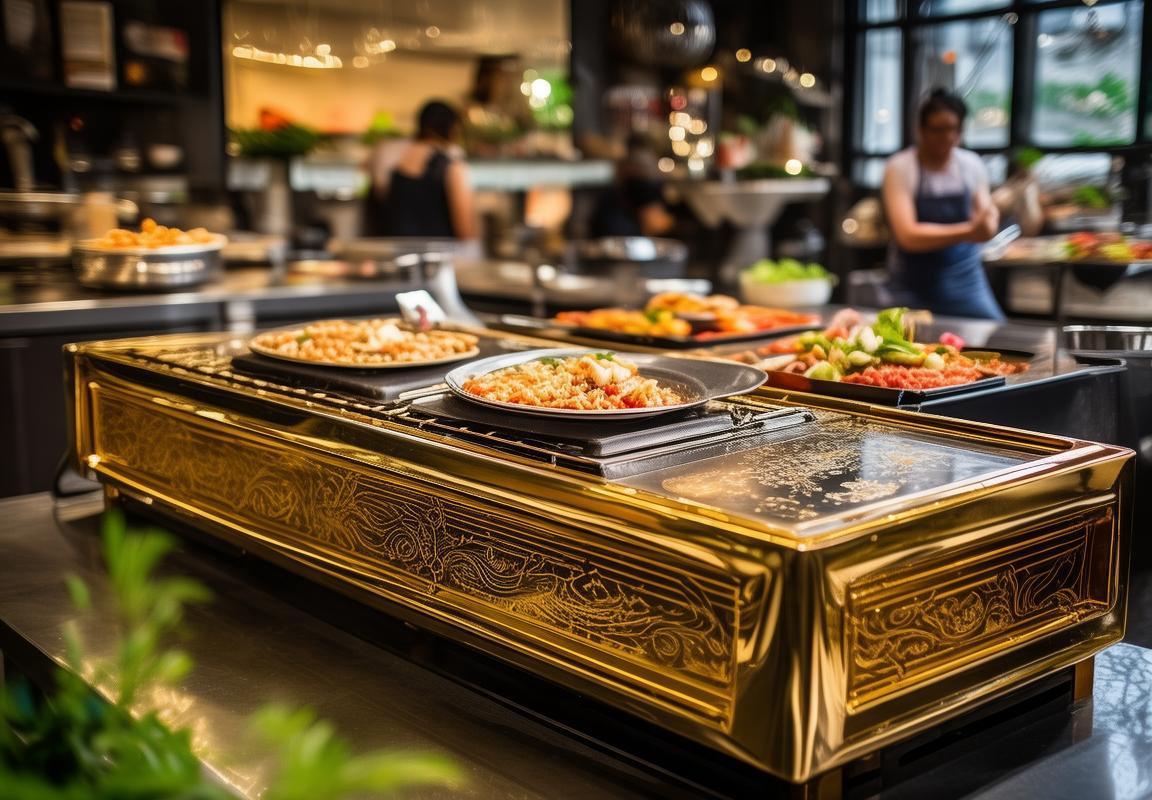
Consumer Preferences and Their Impact on Customization
In the ever-evolving landscape of kitchen appliances, consumer preferences have become the driving force behind the customization trend, particularly in the realm of contact grills. The way consumers think about cooking, health, and aesthetics has significantly influenced the market, shaping the demand for personalized cooking solutions. Here’s a deeper look into how these preferences are impacting the customization of contact grills.
The demand for healthier cooking methods has surged, with consumers increasingly seeking options that minimize oil usage. This preference has led to the rise of contact grills, which naturally press food, allowing for a flavorful yet healthier cooking experience. As a result, manufacturers have responded by offering a variety of models that cater to this health-conscious audience, from non-stick surfaces to adjustable heat settings.
Customization in design is another key factor influencing the contact grill market. Consumers are no longer satisfied with standard, run-of-the-mill appliances; they crave unique and stylish kitchen gadgets that reflect their personal tastes. This has spurred the creation of grills with a wide range of color options, sleek finishes, and even personalized engravings. The ability to match a contact grill to the existing kitchen decor or to express individuality has become a significant selling point.
Functionality is also a major driver of customization. Users today are looking for appliances that not only do their job well but also offer additional features that enhance the cooking experience. Contact grills have evolved to include features like variable temperature control, adjustable cooking surfaces, and even Bluetooth connectivity for remote monitoring. These added functionalities cater to the needs of both novice and seasoned cooks, making customization a way to tailor the cooking experience to individual preferences.
The rise of social media and influencer culture has had a profound impact on consumer preferences. Consumers are more likely to be influenced by what they see on social platforms, where chefs and influencers showcase their culinary creations using custom appliances. This has led to a desire for high-quality, visually appealing contact grills that can serve as a centerpiece in their own kitchens, not just for cooking but also for display.
Eco-consciousness is another preference that’s shaping the customization of contact grills. Consumers are increasingly looking for appliances that are sustainable and environmentally friendly. This has prompted manufacturers to explore eco-friendly materials and energy-efficient designs. Customization here extends to offering a range of grills that are made from recycled materials or have energy-saving features, appealing to the environmentally aware consumer.
Cultural diversity has also played a role in the customization trend. As people from various cultural backgrounds move to different countries, they bring with them their unique culinary traditions and preferences. This has led to a demand for contact grills that can accommodate different types of cooking techniques and ingredients, from those designed for grilling delicate fish to those that can handle hearty steaks.
The rise of food allergies and dietary restrictions has also influenced customization. Contact grills that can be easily cleaned and sanitized to prevent cross-contamination are becoming more popular. Users can opt for grills with removable cooking surfaces or those that come with accessories for easy cleaning. Customization in this area allows consumers to choose appliances that meet their specific dietary needs without compromising on quality or functionality.
Lastly, the convenience factor cannot be overlooked. Consumers are looking for appliances that save them time and effort. Customization in contact grills now includes features like programmable settings, which allow users to set their preferred cooking times and temperatures. The ability to customize these aspects means that users can have a cooking experience that suits their lifestyle, whether they’re short on time or prefer a hands-on approach.
In conclusion, consumer preferences have become multifaceted, encompassing health, aesthetics, functionality, sustainability, cultural diversity, dietary needs, and convenience. These preferences are driving the customization trend in the contact grill market, with manufacturers responding by offering a diverse array of options that cater to the individual tastes and requirements of their customers.
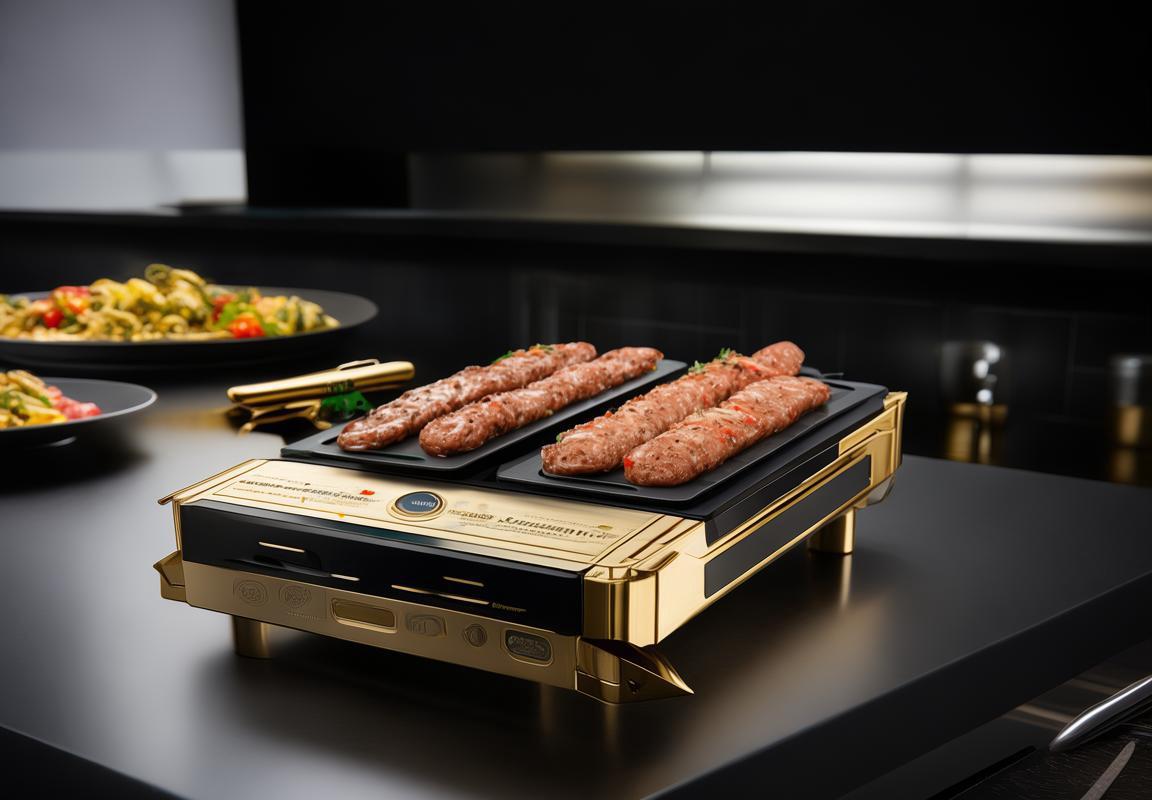
Innovations in Design and Technology
In the ever-evolving world of kitchen appliances, contact grills have seen a surge in popularity, not just for their convenience but also for their ability to cater to a wide range of culinary preferences. This surge is fueled by a blend of technological advancements, design innovations, and changing consumer tastes. Let’s delve into the latest in design and technology that are shaping the future of contact grills.
The integration of smart technology has revolutionized the way contact grills are used. Modern grills now come with features like Bluetooth connectivity, allowing users to control their cooking temperatures and times remotely through their smartphones. This not only adds a layer of convenience but also ensures that the food is cooked to perfection every time.
One of the standout design innovations is the inclusion of non-stick surfaces that are not only easy to clean but also durable. These surfaces are a game-changer for those who prefer a hassle-free cooking experience. The evolution from traditional teflon coatings to more advanced materials like ceramic and diamond-infused coatings has significantly improved the longevity and performance of contact grills.
The ability to adjust cooking temperatures is another key innovation. Grills with precise temperature control allow for a wider range of cooking methods, from searing steaks to delicate fish fillets. This versatility is particularly appealing to home chefs who enjoy experimenting with different recipes and cooking techniques.
In terms of design, contact grills have moved beyond the traditional flat surface. New models feature uneven surfaces that mimic the grill marks of an outdoor grill, enhancing the visual appeal of the food. These textured surfaces also contribute to a more authentic grilling experience, as they help to create those sought-after grill lines on meats.
The incorporation of infrared heating technology has been a significant leap forward. Infrared grills cook food faster and more evenly than traditional electric grills, reducing cooking times and ensuring that the food retains its natural juices. This technology is particularly popular among health-conscious consumers who are looking for quick and healthy cooking options.
Safety features have also seen a major upgrade. Modern contact grills often come with cool-touch handles and safety locks to prevent accidental burns. The introduction of automatic shut-off functions in case of overheating adds an extra layer of security, making these appliances safer for families with young children.
Designers have also started to focus on the aesthetics of contact grills, recognizing that they are not just cooking tools but also kitchen accessories. Grills now come in a variety of colors and finishes, from sleek black and stainless steel to more vibrant reds and blues. This allows consumers to choose a grill that complements their kitchen decor and personal style.
The use of energy-efficient heating elements is another innovation that has gained traction. These elements not only reduce energy consumption but also extend the life of the grill by minimizing wear and tear. As environmental consciousness grows, consumers are increasingly seeking appliances that are both functional and eco-friendly.
In the realm of technology, the integration of cooking apps and recipes has become a standard feature in many contact grills. These apps provide users with a wealth of recipes and cooking tips, making it easier than ever to create restaurant-quality dishes at home. The ability to download and update these apps ensures that users always have access to the latest culinary trends and techniques.
Lastly, the customization of contact grills has become a significant trend. Users can now choose from a variety of grill plates, from classic flat surfaces to ones with grooves for grilling vegetables or creating kebabs. This level of personalization allows for a more tailored cooking experience, catering to individual preferences and dietary needs.
In conclusion, the design and technology of contact grills have come a long way, offering consumers a wide array of features and options that enhance both the cooking experience and the appliance’s place in the kitchen. As these innovations continue to evolve, it’s clear that the future of contact grills is bright, with even more exciting features on the horizon.
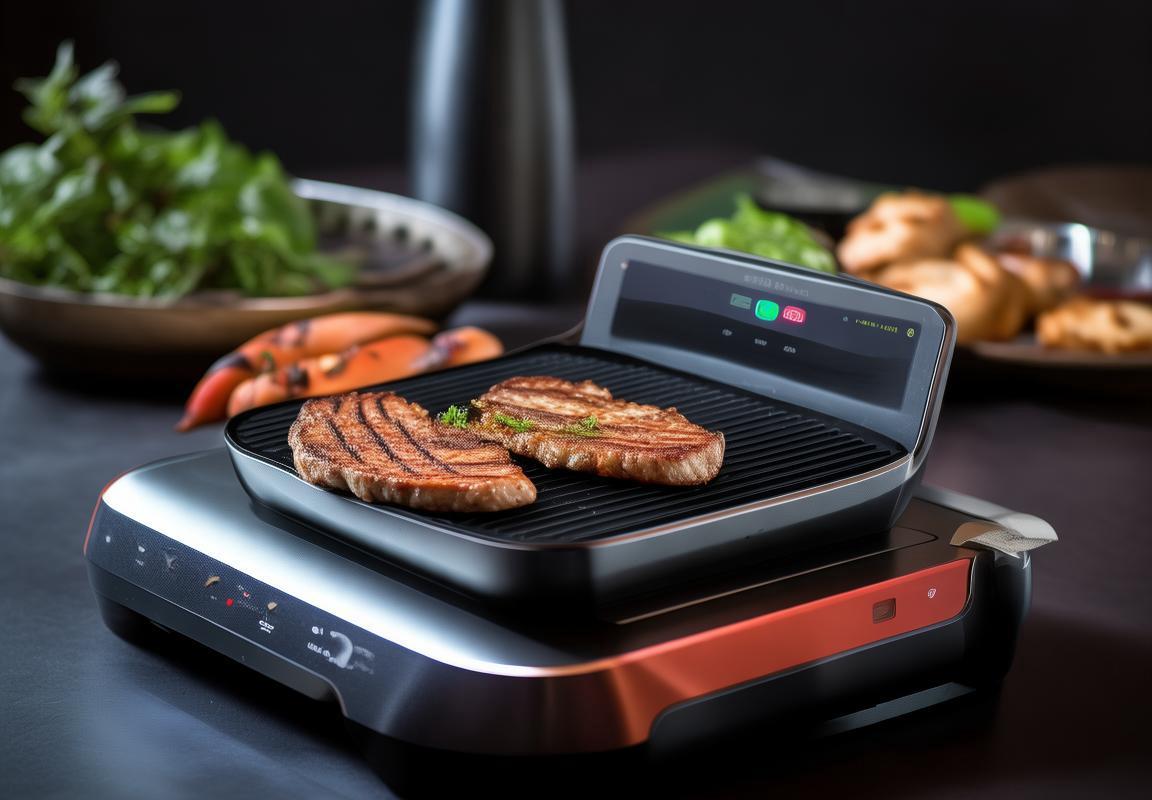
Case Studies: Successful Custom Contact Grill Brands
The world of custom contact grills has seen the emergence of several brands that have not only captured the market’s attention but also set new standards for innovation and personalization. Let’s take a closer look at a few successful custom contact grill brands and the unique features that have propelled them to the forefront of the industry.
GourmetGrill Solutions has carved out a niche for itself with its custom-made contact grills. Their signature product, the “Chef’s Collection,” offers a range of high-end features designed for culinary enthusiasts. The brand’s focus on durable materials like stainless steel and the ability to customize size, heat settings, and cooking surfaces have made GourmetGrill Solutions a favorite among professional chefs and home cooks alike.
The “Chef’s Collection” features a variable heat control system that allows users to achieve the perfect sear on meats, vegetables, and more. Each grill comes with a unique stamp of the customer’s name or logo, adding a personal touch to a kitchen staple. GourmetGrill Solutions has also integrated smart technology, enabling grills to be controlled via smartphone apps, making cooking more convenient and efficient.
Sizzle Steel has become synonymous with the art of custom grilling. Their commitment to craftsmanship is evident in their hand-forged grills, which are available in a variety of styles and finishes. One of their most popular models, the “Artisan Series,” offers a seamless cooking surface and a reversible cast iron plate that can be used as a flat-top grill or a contact grill.
What sets Sizzle Steel apart is their emphasis on the customer’s culinary preferences. Whether it’s a rustic finish, a modern design, or specific cooking functions, Sizzle Steel works closely with customers to create a grill that meets their exact needs. The brand’s customer service has also received accolades, as they are known for their personalized support and dedication to after-sales service.
KettleBrand Grills has a cult following for its innovative approach to contact grilling. Their “KettleMaster” series stands out with its patent-pending design that combines the functionality of a kettle grill with the precision of a contact grill. This unique combination allows for direct and indirect cooking methods, giving users the flexibility to cook a wide variety of foods.
What makes KettleBrand Grills particularly appealing is the level of customization they offer. Customers can choose from a selection of handles, hinges, and cooking surfaces, and even opt for additional accessories like smokers and rotisseries. The brand’s dedication to sustainability is also notable, as they use recycled materials for their packaging and encourage customers to recycle their grills at the end of their useful life.
FireFly Grills has gained popularity for its eco-friendly and sustainable approach to custom contact grills. Their “EcoEdge” series is crafted from recycled stainless steel and comes with a range of energy-efficient features that reduce power consumption and extend the life of the grill.
FireFly Grills takes customization to a new level by allowing customers to select from a variety of eco-friendly finishes, such as bamboo, teak, or recycled aluminum. The brand also offers a “Build Your Grill” option, where customers can choose components like burners, cooking grids, and side burners to create a grill that is tailored to their specific cooking habits and preferences.
These case studies illustrate the power of customization in the contact grill market. Each brand has capitalized on unique selling points, from materials and design to technology and customer service. As the market continues to evolve, these successful brands have shown that the key to customer satisfaction lies in listening to what consumers want and delivering it in a high-quality, personalized product.
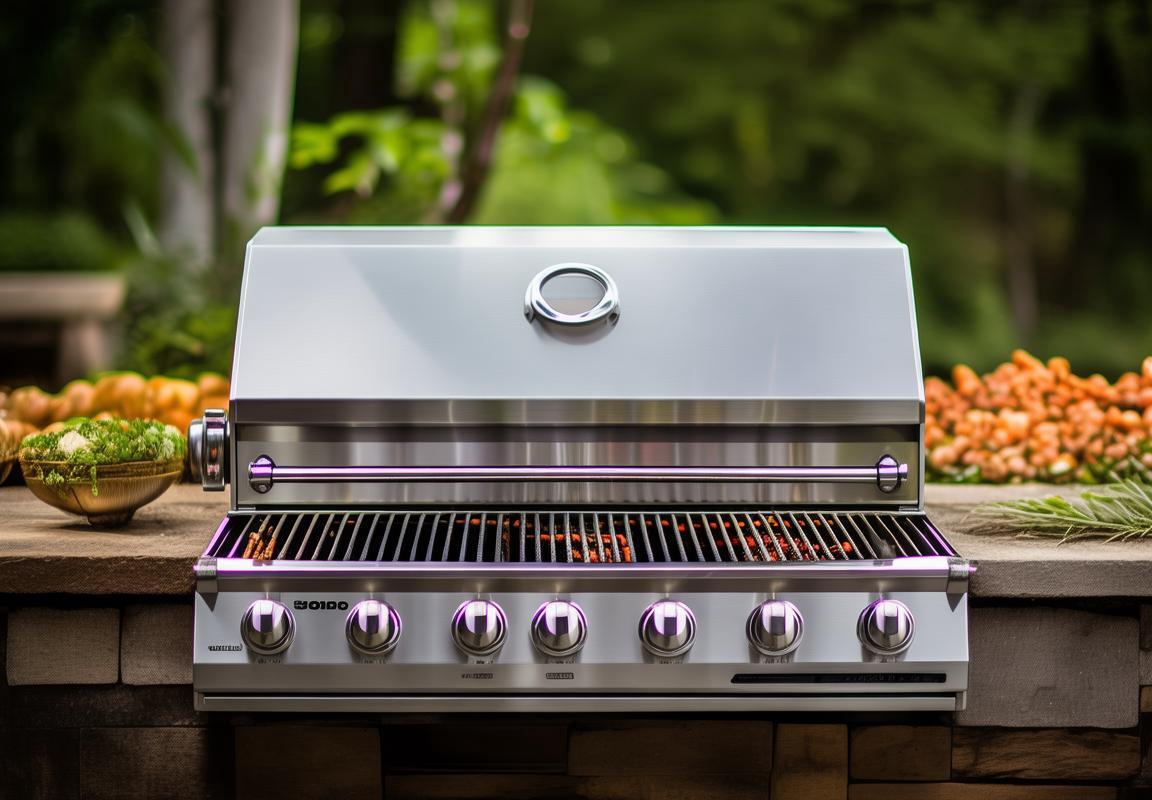
Challenges and Opportunities in the Custom Contact Grill Sector
In the custom contact grill sector, navigating the complexities of market demands and technological advancements presents a unique set of challenges and opportunities. Balancing consumer expectations with innovative features and sustainable practices is crucial for brands looking to thrive in this niche market.
Consumer tastes and preferences are ever-evolving, pushing manufacturers to stay ahead of the curve. This dynamic landscape requires a keen understanding of market trends and a willingness to adapt. For instance, the growing emphasis on health and wellness has led to a surge in interest in grills that offer healthier cooking options, such as those with non-stick surfaces or adjustable temperature controls.
The rise of eco-conscious consumers has also introduced new challenges. Brands must now consider the environmental impact of their products, from materials used in construction to the energy efficiency of the grills themselves. This shift has opened doors for innovative brands to showcase their commitment to sustainability, which can be a significant differentiator in a crowded market.
One of the most significant opportunities in the custom contact grill sector lies in the integration of smart technology. With the increasing prevalence of smart homes, consumers are looking for appliances that can be controlled remotely and offer enhanced convenience. This integration not only makes grilling more accessible but also allows for features like temperature monitoring and automated cleaning cycles, which can greatly improve user experience.
Moreover, the customization aspect of contact grills presents a unique opportunity for brands to create a personal connection with their customers. By offering a variety of finishes, sizes, and even cooking surfaces, manufacturers can cater to a wide range of preferences. This not only allows for a more diverse product line but also encourages customer loyalty and brand advocacy.
However, with these opportunities come challenges. The complexity of customization can lead to increased production costs and longer lead times. Ensuring consistency in quality across a wide range of custom options is a significant hurdle. Brands must invest in robust quality control systems and efficient supply chains to manage these challenges effectively.
Another challenge is the need for continuous innovation. As new materials and technologies emerge, brands must be prepared to adapt their products accordingly. This requires a substantial investment in research and development, which can be a barrier for smaller players in the market.
Despite these challenges, the opportunities in the custom contact grill sector are vast. The ability to cater to niche markets, such as outdoor enthusiasts, health-conscious consumers, and tech-savvy individuals, can lead to significant growth. Additionally, the rise of e-commerce has made it easier for consumers to discover and purchase custom products, expanding the potential customer base.
Brands that succeed in this sector often do so by focusing on the following:
-
Quality and Reliability: Ensuring that each custom contact grill meets the highest standards of quality and reliability is paramount. This builds trust with customers and encourages repeat business.
-
Innovation: Investing in R&D to incorporate new technologies and materials can set a brand apart from its competitors. This can lead to a competitive edge and increased market share.
-
Customization Options: Offering a wide range of customization options without compromising on quality can attract a diverse customer base. This includes various finishes, sizes, and cooking surfaces.
-
Sustainability: Embracing sustainable practices and materials can appeal to eco-conscious consumers and differentiate a brand in a crowded market.
-
Marketing and Branding: Effective marketing strategies that highlight the unique aspects of custom contact grills can attract attention and drive sales.
-
Customer Service: Providing exceptional customer service, including support for customization options and after-sales care, can foster customer loyalty and positive word-of-mouth.
In conclusion, the custom contact grill sector is ripe with opportunities for growth and innovation. While challenges such as cost management, quality control, and market competition exist, those brands that can navigate these obstacles successfully will find a lucrative and rewarding market to explore.

Expert Insights: Predictions for the Future of Custom Contact Grills
In the realm of kitchen appliances, custom contact grills have emerged as a niche market that continues to gain traction. These specialized grills offer consumers the ability to tailor their cooking experience to their personal preferences and kitchen space. Here, we delve into the challenges and opportunities that define this dynamic sector.
The demand for customization in contact grills reflects a broader shift in consumer behavior, where personalization is key. Home cooks are increasingly seeking appliances that not only perform well but also align with their unique tastes and lifestyles. This trend has spurred a wave of innovation in the design and functionality of contact grills, creating a rich tapestry of opportunities for brands to differentiate themselves.
However, the path to success in the custom contact grill sector is not without its hurdles. The complexity of customization can lead to challenges in production, logistics, and customer satisfaction. Navigating these challenges requires a strategic approach that balances creativity with practicality.
One significant challenge is the cost factor. Customization often translates to higher prices, which can be a barrier for some consumers. Brands must find a balance between offering a premium product and ensuring affordability without compromising on quality. This delicate balancing act can impact the brand’s profitability and market reach.
Moreover, the customization process itself can be complex. From selecting materials and finishes to choosing features and settings, the possibilities can be overwhelming for consumers. Ensuring that the process is user-friendly and straightforward is crucial for maintaining customer satisfaction and loyalty.
On the flip side, the opportunity to tap into a niche market with a loyal customer base is substantial. The custom contact grill sector has room for growth, especially as consumers become more conscious of their cooking habits and the appliances they use. Brands that can effectively market their unique value proposition will find a receptive audience.
Brands that have managed to thrive in this sector often focus on a few key strategies. They prioritize quality, offering materials and construction that stand the test of time. They also invest in research and development to stay ahead of technological advancements and design trends.
Marketing plays a pivotal role in the custom contact grill sector. Successful brands understand the importance of storytelling, highlighting the unique aspects of their products and how they enhance the cooking experience. They often leverage social media and influencer partnerships to reach a wider audience and build brand recognition.
Customer service is another area where opportunities abound. Brands that excel in this aspect can differentiate themselves by providing exceptional support, ensuring that customers feel confident in their purchase. This includes offering detailed instructions, troubleshooting guides, and easy-to-reach customer service teams.
Despite the challenges, the custom contact grill sector presents several opportunities. For instance, there’s a growing interest in eco-friendly appliances, which opens the door for brands to develop sustainable and energy-efficient custom grills. Additionally, as health and wellness become more prominent in consumer choices, there’s a chance to innovate with contact grills that offer healthier cooking options, such as non-stick coatings that reduce the need for oil.
The rise of smart home technology also presents an opportunity. By integrating custom contact grills with smart home systems, brands can offer enhanced functionality and convenience. This could include features like remote temperature control or the ability to connect to recipe apps, further enhancing the cooking experience.
In the future, the custom contact grill sector may see further opportunities in international markets. As culinary cultures blend and global travel becomes more common, there’s a chance for brands to cater to specific international tastes and preferences, creating a diverse range of custom grills.
In conclusion, while the custom contact grill sector faces its fair share of challenges, the opportunities for growth and innovation are substantial. By focusing on quality, customer satisfaction, and embracing new technologies, brands can carve out a successful niche in this dynamic market. The key lies in understanding the consumer’s evolving needs and delivering products that not only meet but exceed expectations.
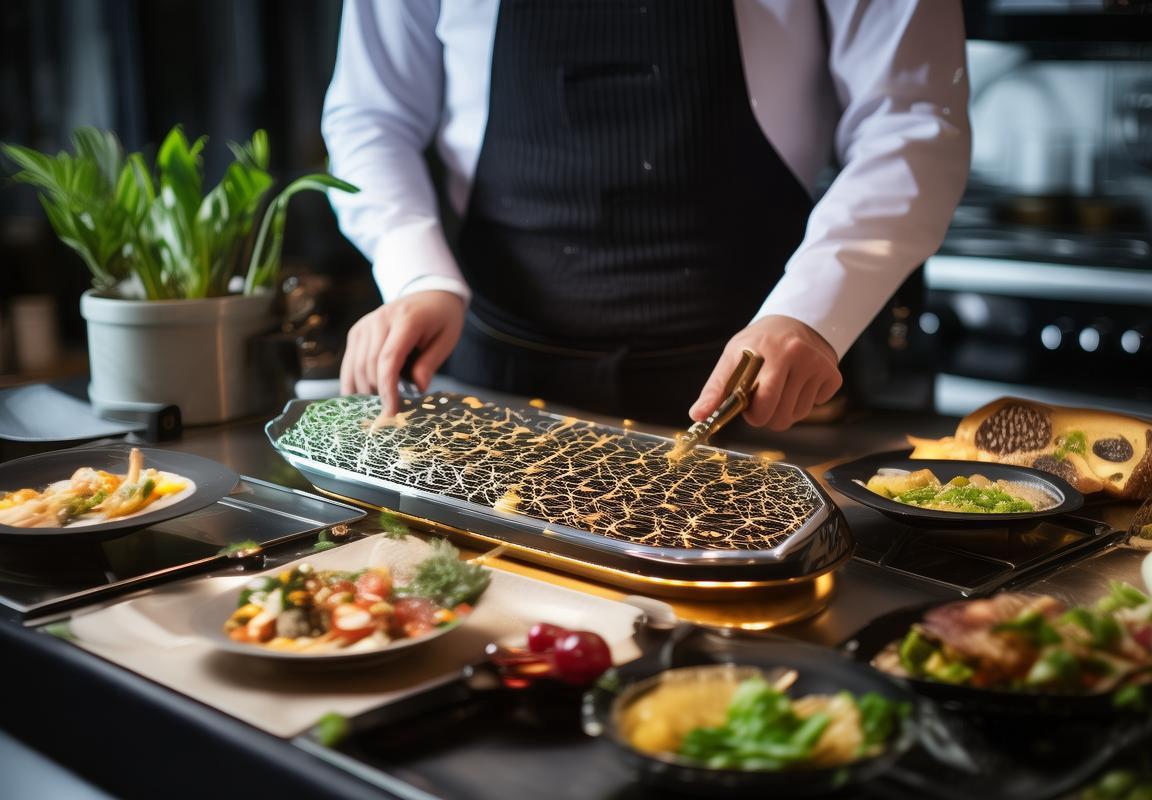
Conclusion: The Uniqueness of Custom Contact Grills in the欧美 Kitchen Landscape
In the evolving landscape of kitchen appliances, custom contact grills have carved out a niche for themselves, offering a blend of functionality and personalization that resonates with consumers seeking both style and substance. These grills, with their unique features and customizable options, have become more than just cooking tools; they are statements of culinary personality. Let’s delve into the distinctive aspects that make custom contact grills stand out in the kitchen.
The integration of smart technology has transformed the way we interact with our appliances, and custom contact grills are no exception. With features like Bluetooth connectivity, these grills can be controlled remotely, allowing users to monitor and adjust cooking temperatures from their smartphones. This level of convenience and control has become a major draw for tech-savvy consumers who value efficiency and ease of use.
Design trends in custom contact grills have shifted towards sleeker, more modern aesthetics. Brands are now offering a variety of finishes, from classic stainless steel to bold colors and even wood-grain patterns. This not only complements contemporary kitchen designs but also provides a canvas for homeowners to express their style preferences. The ability to match or contrast the grill with existing kitchen decor is a significant factor in the appeal of these products.
Customization extends beyond just the appearance; it includes the functionality of the grill. Users can now choose from a range of cooking surfaces, from non-stick to cast iron, and even surfaces that are specifically designed for smoking or searing. The versatility offered by these options means that the grill can cater to a wide array of cooking techniques and preferences, from traditional grilling to gourmet-level cooking experiences.
Safety features have also become a focal point in the design of custom contact grills. With concerns over kitchen accidents and burns, manufacturers have introduced innovative safety features such as cool-touch handles, auto shut-off functions, and non-slip bases. These features not only protect users but also contribute to the overall appeal of the product, as they address real-life concerns.
Case studies of successful custom contact grill brands reveal a common thread: a deep understanding of consumer needs and a commitment to innovation. Brands like Weber and Char-Broil have managed to stay ahead by continuously introducing new features and staying attuned to market trends. Their success lies in their ability to anticipate what consumers want and deliver it in a way that is both practical and enjoyable.
However, the custom contact grill sector is not without its challenges. The high cost of customization can be a barrier for some consumers, especially when compared to standard, non-customized models. Additionally, the complexity of offering a wide range of customization options can lead to increased production costs and longer lead times. Despite these challenges, opportunities abound.
Opportunities in the sector include expanding the market to include younger demographics who are more open to tech-driven appliances and personalization. There’s also potential for growth in international markets, where the concept of custom contact grills is still relatively new. Collaborations with interior designers and chefs could also open up new avenues for marketing and product development.
Experts in the industry predict that the future of custom contact grills will be shaped by continued technological advancements and a growing emphasis on sustainability. Smart grills with AI capabilities could become the norm, offering predictive cooking times and even suggesting recipes based on the user’s preferences and the ingredients at hand. Eco-friendly materials and energy-efficient designs are also expected to become more prevalent, as consumers become more environmentally conscious.
In conclusion, the uniqueness of custom contact grills in the kitchen landscape lies in their ability to blend cutting-edge technology, personalized design, and practical functionality. As the market continues to evolve, these grills are not only becoming a staple in many kitchens but are also setting the stage for what the future of kitchen appliances might look like. With the right balance of innovation and consumer insight, custom contact grills are poised to remain a standout choice for those who want a kitchen appliance that’s as unique as their culinary style.